Grooming Tips & Care Guides for a Happier, Healthier Pet
From gentle bath routines to smart de-shedding practices, discover expert-approved grooming tips to keep your furry friend feeling fresh and fabulous — every day
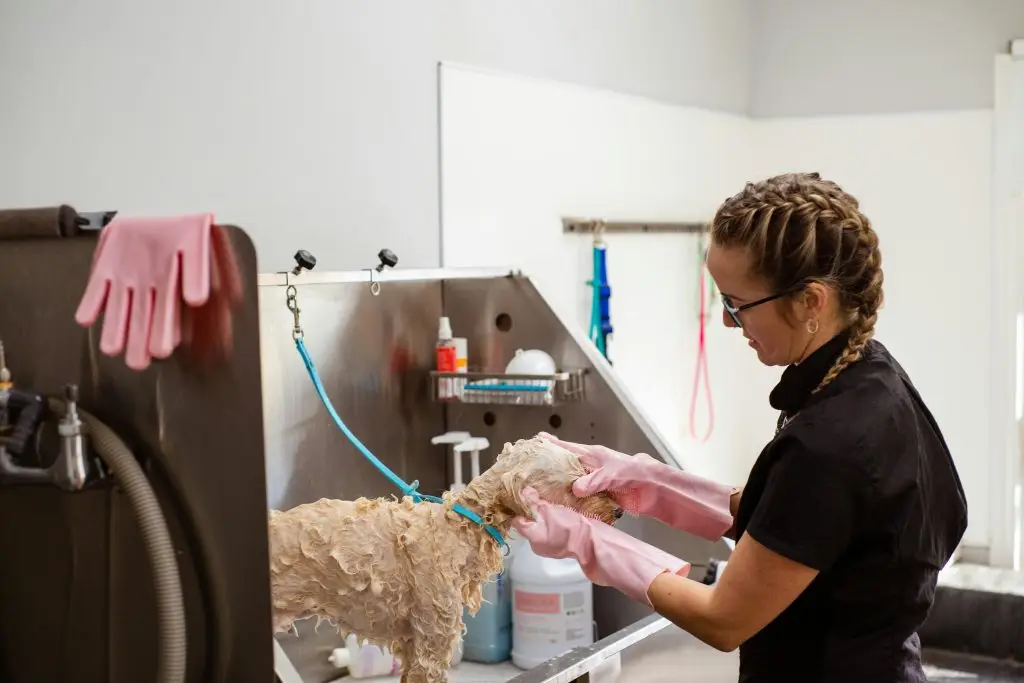
Bath & Brush
Learn how regular baths and brushing keep your pet’s coat clean, healthy, and shiny
Bath & Brush
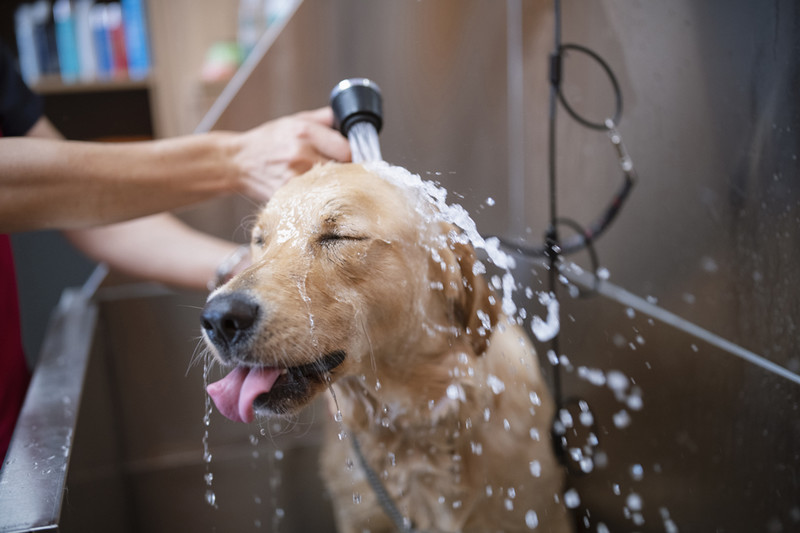
Keep your pet looking and feeling their best with regular baths and brushing. This essential grooming routine promotes a healthy, shiny coat while reducing shedding and preventing skin issues.
Why It Matters:
- Removes dirt, dander, and loose fur.
- Prevents matting and tangles.
- Promotes healthy skin and coat shine.
- Helps detect early signs of skin irritations or pests.
Recommended Products:
- Gentle, pet-safe shampoo (avoid human shampoos).
- Soft bristle brushes for short-haired pets.
- Slicker or de-shedding brushes for long-haired breeds.
How Often?
Generally, pets should be bathed once every 4-6 weeks, but this can vary by breed, coat type, and lifestyle. Regular brushing should be done 2-3 times a week to keep the coat free from tangles and reduce shedding.
Pro Tips:
- Always brush before a bath to detangle fur.
- Use lukewarm water — not too hot or too cold.
- Place a non-slip mat in the tub to keep your pet steady.
- Dry thoroughly with a clean towel or pet-safe dryer.
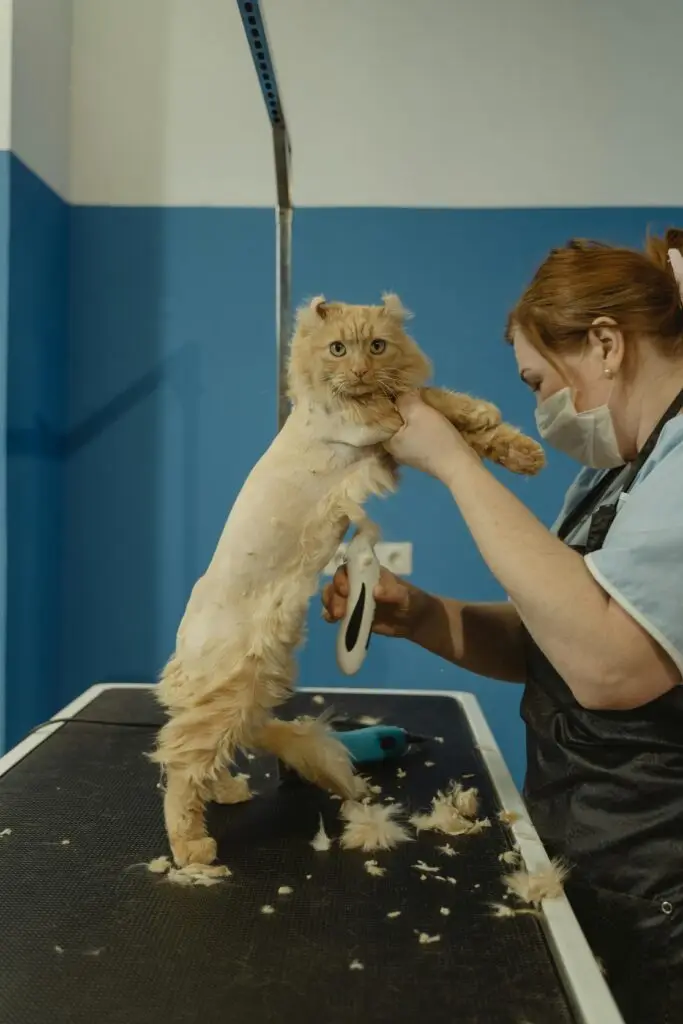
Hair Trimming & Styling
Discover how trimming your pet’s fur keeps them comfy and neat
Hair Trimming & Styling

Give your pet a fresh, clean, and comfortable look with professional trimming and styling tailored to their breed and lifestyle.
Why It Matters:
- Maintains a neat appearance.
- Prevents hair from blocking vision or irritating skin.
- Reduces tangles, matting, and hygiene issues.
- Keeps your pet cool during warm weather.
Popular Styles:
- Teddy Bear Cut (fluffy and rounded style).
- Clean Face and Feet Trim (for neatness and hygiene).
- Breed-specific trims (like Schnauzer or Poodle cuts).
Trimming Essentials:
- Pet grooming scissors (blunt tips for safety).
- Electric clippers with adjustable guards.
- Slicker brush for pre and post-trim brushing.
Pro Tips:
- Always brush and detangle before trimming.
- Use sharp, pet-safe grooming tools.
- Keep treats nearby to reward calm behavior.
- Take frequent breaks if your pet is restless.

Nail Clipping & Filling
Help your pet stay comfortable and avoid paw problems with proper nail care.
Nail Clipping & Filling
Regular nail care is essential for your pet’s health, comfort, and hygiene. Overgrown nails can cause discomfort, affect how your pet walks, and even lead to injuries. Here’s a detailed guide to safely trim, file, and care for your pet’s nails.
Why It Matters:
- Prevents nails from cracking, splitting, or curling into the paw pads, which can cause painful wounds.
- Maintains proper posture and gait, reducing stress on joints and tendons.
- Avoids scratches on furniture, flooring, and yourself.
- Helps detect abnormalities like swelling, infections, or embedded debris.
Recommended Tools:
- Pet nail clippers: Choose scissor-style for large pets and guillotine-style for smaller ones.
- Nail grinder: Great for smoothing sharp edges and shaping nails safely.
- Styptic powder: Stops bleeding immediately in case you trim too close.
- Soft nail file: Finishes edges and prevents snagging on fabric.
- Paw balm: Keeps paw pads moisturized after trimming.
How Often?
Ideally, trim your pet’s nails every 3-4 weeks. This can vary depending on breed, activity level, and whether your pet walks on rough outdoor surfaces. Listen for clicking sounds on hard floors — it’s a sign they're too long.
Step-by-Step Nail Trimming Tips:
- Pick a quiet, well-lit area and have treats ready.
- Hold the paw firmly but gently, isolating one toe at a time.
- Identify the 'quick' (pink area inside light-colored nails) and avoid it. For dark nails, trim small amounts gradually.
- Clip at a slight angle following the natural curve of the nail.
- Use a grinder or file to smooth sharp edges and prevent snagging.
Aftercare & Paw Massage:
After trimming, gently massage the paw pads to relax your pet and apply a paw balm to keep them soft and moisturized. Reward your pet with their favorite treat or toy to create positive associations with nail care.
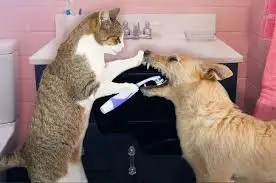
Teeth & Ear Care
Maintain your pet’s dental hygiene and ear health with these gentle, easy tips.
Ear Cleaning & Dental Care
Good ear and dental hygiene helps prevent discomfort, infections, and long-term health issues in your furry friend. With a gentle routine and the right tools, you can keep your pet’s ears clean and their breath fresh!
Why It Matters:
- Prevents painful ear infections and buildup of wax, dirt, and mites.
- Reduces bad breath, tartar, and gum disease with regular dental care.
- Protects overall health — poor oral hygiene can affect the heart, kidneys, and liver.
Recommended Tools:
- Ear cleaning solution: Vet-approved, non-alcohol based formulas are best.
- Soft gauze or cotton pads: For gently wiping ear folds and visible dirt.
- Pet toothbrush: Finger brushes or angled brushes sized for pets.
- Pet-safe toothpaste: Never use human toothpaste (toxic to pets).
- Dental chews or water additives: Help maintain oral health between brushes.
How Often?
Clean your pet’s ears once a week or as recommended by your vet, especially for floppy-eared breeds. For dental care, aim to brush 2–3 times a week, and provide daily dental treats if brushing isn’t always possible.
Step-by-Step Ear Cleaning:
- Gently lift the ear flap and inspect for redness, discharge, or foul odor.
- Apply a few drops of ear solution into the canal (follow product instructions).
- Massage the base of the ear for 20–30 seconds to loosen debris.
- Let your pet shake its head, then wipe the outer ear with gauze.
Step-by-Step Dental Care:
- Use a pet toothbrush with a pea-sized amount of pet toothpaste.
- Lift lips gently and brush in small circles along the gumline.
- Focus on outer surfaces where plaque builds up most.
- End with praise and a dental treat to make it positive!
Watch For:
- Redness, swelling, or strong odor from ears — signs of infection.
- Bleeding gums, excessive drooling, or reluctance to eat — possible dental issues.
Regular care keeps your pet comfortable, happy, and healthy — from ears to teeth! 🐾
🐾 Common Grooming Mistakes to Avoid
Even the most loving pet owners can make grooming mistakes that lead to discomfort or health issues. Learn what to avoid and how to do better to keep your furry friends happy and healthy.
❌ Infrequent Grooming Sessions
Problem: Neglecting regular grooming can lead to matted fur, skin irritations, and unnoticed health issues.
Solution: Establish a consistent grooming schedule tailored to your pet's breed and coat type.
❌ Bathing Too Often
Problem: Overbathing can strip natural oils from your pet's skin, causing dryness and irritation.
Solution: Limit baths to once a month or as recommended for your pet’s coat type.
❌ Not Brushing Before Bathing
Problem: Brushing removes tangles; skipping it worsens mats during bathing.
Solution: Always brush your pet before a bath to avoid painful knots.
❌ Using the Wrong Tools
Problem: Incorrect grooming tools can hurt your pet or damage their coat.
Solution: Use appropriate brushes, clippers, and products for your pet’s coat type.
❌ Ignoring Nail Care
Problem: Overgrown nails cause pain and walking issues.
Solution: Trim your pet's nails regularly, avoiding the sensitive quick.
❌ Skipping Ear Cleaning
Problem: Dirty ears can cause painful infections.
Solution: Clean ears gently with vet-approved solutions, avoiding deep insertion.
❌ Using Human Products
Problem: Human shampoos disrupt your pet’s skin pH balance.
Solution: Always use pet-safe grooming products formulated for them.
❌ Rushing the Grooming Process
Problem: Hasty grooming stresses pets and risks accidents.
Solution: Take your time, ensure a calm atmosphere, and go slow with each step.
🌸 Seasonal Grooming Tips for Happy Pets
Every season brings unique challenges and care requirements for our furry companions. Keep your pets comfortable and healthy all year long by following these tailored grooming tips for spring, summer, autumn, and winter.
🌸 Spring
✔️ Shedding Care: Brush regularly to manage seasonal shedding.
✔️ Flea & Tick Checks: Start preventive treatments early in the season.
☀️ Summer
✔️ Heat Safety: Keep pets cool, shaded, and well-hydrated.
✔️ Paw Protection: Avoid hot pavements and check for burns.
🍂 Autumn
✔️ Coat Trimming: Manage fur as temperatures start to drop.
✔️ Dry Skin Care: Moisturize and adjust grooming products if needed.
❄️ Winter
✔️ Moisturizing: Prevent dry, flaky skin with pet-safe balms.
✔️ Longer Coat: Keep fur a bit longer for extra warmth.
✔️ Salt Caution: Wipe paws after walks on treated roads.
Pets Most Used Grooming Tools
Proper grooming is vital for your pet’s health, comfort, and happiness. Each tool plays a unique role in maintaining hygiene, reducing shedding, and strengthening the bond between pet and owner. Explore the circular menu to learn how each tool is used and why it’s essential.
Brush

Comb
Clippers
Nail Cutter
Ear Cleaner
Shampoo
Toothbrush
Wipes

De-shedder
Dryer
Select a Tool
Click a tool to see full details.
No tool selected yet.
Grooming Smarts: Safety Tips & Common Myths
Home Grooming Safety Tips
- Always use pet-safe products — avoid human shampoos and clippers.
- Keep grooming tools clean and sanitized to prevent infections.
- Check for skin issues, cuts, or irritations before grooming.
- Avoid water in ears to prevent infections — use cotton balls if needed.
- Use blunt-tipped scissors for trimming around sensitive areas.
- Test water temperature before bathing your pet.
- Keep treats handy to make grooming a positive experience.
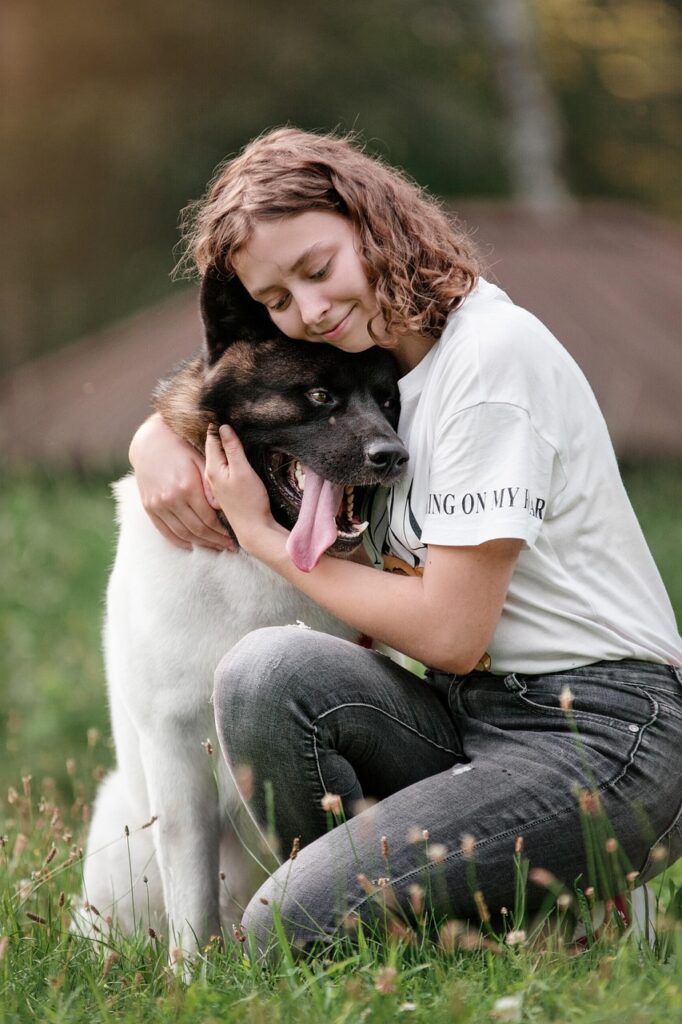

Common Grooming Myths Debunked
- Myth: Shaving your pet keeps them cooler in summer.
Truth: A pet’s coat regulates their body temperature. Shaving can actually make them prone to sunburn and overheating. - Myth: Pets don’t need regular grooming if they stay indoors.
Truth: Indoor pets still shed, get mats, and need nail trims and ear checks. - Myth: Human shampoo is fine for pets.
Truth: Human shampoos can irritate pet skin — always use pet-safe products. - Myth: You should bathe your pet weekly.
Truth: Too frequent baths strip natural oils, causing dry skin. Follow vet-recommended schedules based on coat type. - Myth: Grooming is just for looks.
Truth: Grooming helps prevent skin issues, infections, and keeps your pet healthy and comfortable.
Pet Grooming FAQs
Have questions about keeping your furry friend fresh, clean, and healthy? Here are some of the most common grooming questions pet owners ask, along with practical, expert-backed answers to help you along the way.
Different coat types require different brushes. Slicker brushes are great for removing mats, while bristle brushes suit short-haired pets. Check your pet’s coat type before choosing.
Use treats, toys, and soothing words to create a positive experience. Start with short bath sessions and consider waterless shampoos or professional grooming if necessary.
Regular brushing, especially for long-haired breeds, helps prevent mats. Always brush before bathing and use detangling sprays if needed.
Yes — with the right tools and a little patience, you can groom your pet at home. Start with brushing and baths, and seek professional help for more complex tasks like haircuts or nail trims.
Inspect your pet's ears weekly for dirt or odor. Clean them once a month or as advised by your vet using a pet-safe ear cleaner.
Watch out for tangled fur, bad odor, itchy skin, visible dirt, or overgrown nails — these are clear signs it’s grooming time.
Yes — pets still need regular grooming in winter to maintain a healthy coat and avoid dry skin. Focus on brushing, moisturizing paw pads, and avoiding exposure to salt and chemicals on roads.
